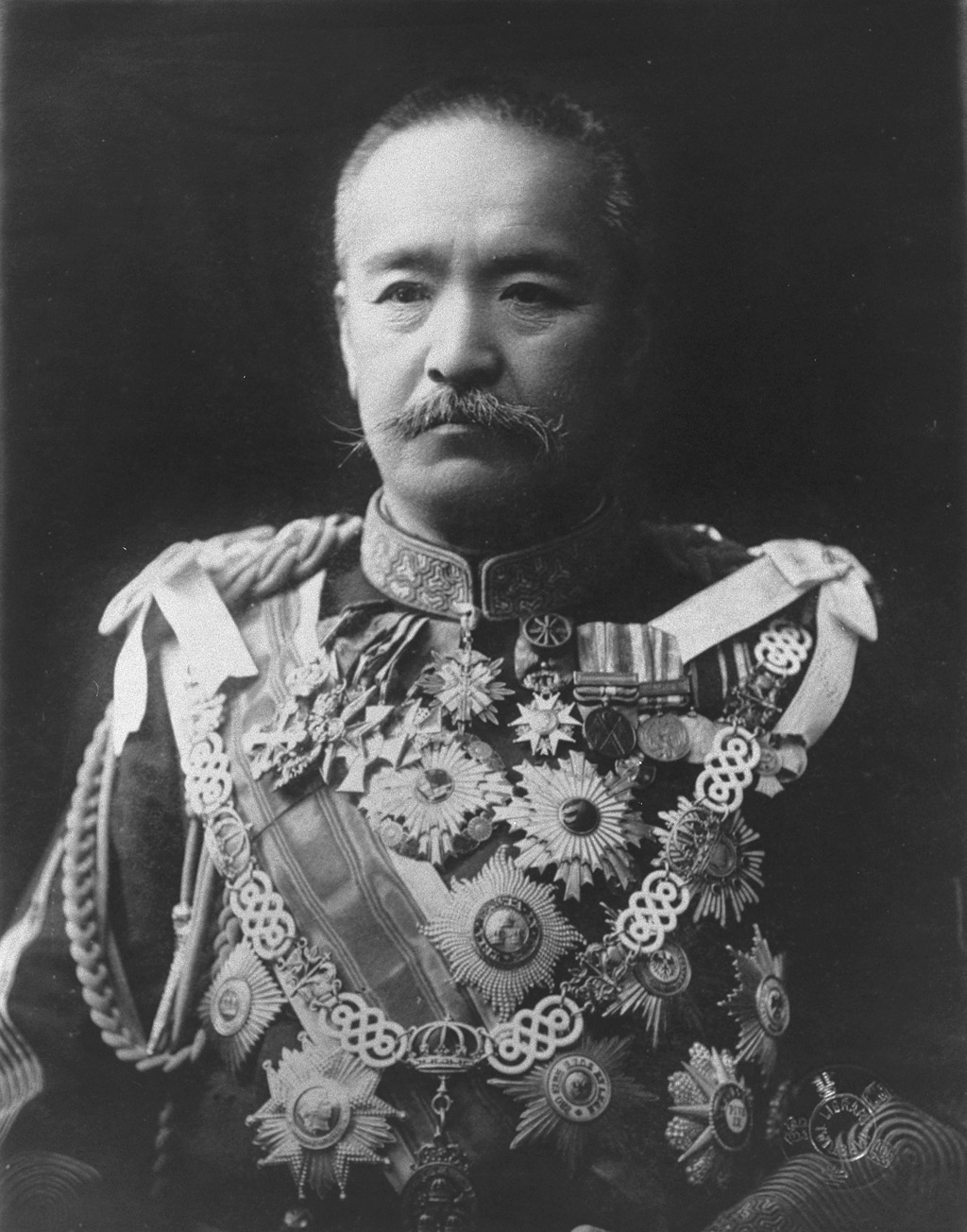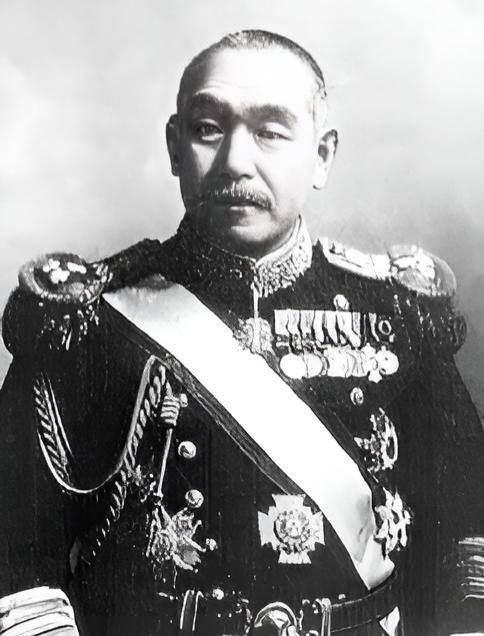Chamberlain of Japan on:
[Wikipedia]
[Google]
[Amazon]
The is a department of the

 This is a list of grand chamberlains after the
This is a list of grand chamberlains after the
Imperial Household Agency , Board of the Chamberlains
{{Authority control Imperial Household Agency
Imperial Household Agency
The (IHA) is an agency of the government of Japan in charge of state matters concerning the Imperial Family, and also the keeping of the Privy Seal and State Seal of Japan. From around the 8th century AD, up until the Second World War, it ...
of Japan.
History
According toTaihō Code
The was an administrative reorganisation enacted in 703 in Japan, at the end of the Asuka period. It was historically one of the . It was compiled at the direction of Prince Osakabe, Fujiwara no Fuhito and Awata no Mahito. Nussbaum, Louis-Fr� ...
around the 8th century, it was presupposed that a chamberlain belonged to the Ministry of the Center. When the was installed during the Heian era
The is the last division of classical Japanese history, running from 794 to 1185. It followed the Nara period, beginning when the 50th emperor, Emperor Kanmu, moved the capital of Japan to Heian-kyō (modern Kyoto). means "peace" in Japanese. ...
, the chamberlain's role was quickly reduced, limited to matters of courtesy. In 1869, the chamberlain was brought within the Imperial Household Ministry. The position of Grand Chamberlain was placed within the merit system in 1871, and three people—Tokudaiji Sanetsune
''With information translated from the Japanese Wikipedia article''
Duke was a Japanese statesman and Lord Keeper of the Privy Seal of Japan in the Meiji era.
Life
Tokydaiji Sanetsune was born to a branch of the Fujiwara court nobility in Ky ...
, Masataka Kawase, and Higashikuze Michitomi
Count was a Japanese noble and statesman of the late Edo period and early Meiji period.
He was among the pro-Emperor ''sonnō jōi'' faction nobles who escaped to Chōshū Domain after members of the pro-shogunate '' kōbu gattai'' faction stag ...
—were appointed. According to the Imperial Household Ministry regulations, the Grand Chamberlain supervises chamberlains who closely attend the appointed person, reports to that person and announces their orders.
After World War II
World War II or the Second World War, often abbreviated as WWII or WW2, was a world war that lasted from 1939 to 1945. It involved the vast majority of the world's countries—including all of the great powers—forming two opposin ...
, the chamberlains were organized into the Board of the Chamberlains, within the Imperial Household Agency, through the temporary . After passage of the National Public Service Law (Shōwa 22 Law No. 120), the chamberlain became a special service national public servant. Although distinctions between first-class officials, second class officials, and so forth continued, the class publication to an appointment document would no longer be carried out after the 2001 Central Government Reform.
Organisation
The is a chief functionary of the Imperial court, and aide of theEmperor of Japan
The Emperor of Japan is the monarch and the head of the Imperial House of Japan, Imperial Family of Japan. Under the Constitution of Japan, he is defined as the symbol of the Japanese state and the unity of the Japanese people, and his positio ...
. He also keeps the Privy Seal
A privy seal refers to the personal seal of a reigning monarch, used for the purpose of authenticating official documents of a much more personal nature. This is in contrast with that of a great seal, which is used for documents of greater impor ...
and the State Seal and has been an official civil servant since the Meiji Period
The is an era of Japanese history that extended from October 23, 1868 to July 30, 1912.
The Meiji era was the first half of the Empire of Japan, when the Japanese people moved from being an isolated feudal society at risk of colonization ...
. Today, the Grand Chamberlain, assisted by a Vice-Grand Chamberlain, heads the Board of the Chamberlains.
The Grand Chamberlain's position is that of an attestation official ( 認証官 ''Ninshōkan''), i.e. his appointment and dismissal are at the discretion of the Emperor.
Crown Prince
TheCrown Prince of Japan
is the younger brother and heir presumptive of Emperor Naruhito of Japan and the younger son of Emperor emeritus Akihito and Empress emerita Michiko. Since his marriage in June 1990, he has had the title and has headed his own branch of the im ...
is also served by a chamberlain. This official is called because the Crown Prince lives in the Tōgū Palace
In Japan, the traditionally does not refer to a single location, but to any residence of the Imperial Crown prince. As Prince Akishino, the current heir presumptive, is not a direct male descendant to the Emperor and not an Imperial Crown Prince h ...
("East Palace"). The Grand Master is the head of the Board of the Crown Prince's Household.
Grand Chamberlains

 This is a list of grand chamberlains after the
This is a list of grand chamberlains after the Meiji period
The is an era of Japanese history that extended from October 23, 1868 to July 30, 1912.
The Meiji era was the first half of the Empire of Japan, when the Japanese people moved from being an isolated feudal society at risk of colonization ...
:
* Prince Tokudaiji Sanetsune
''With information translated from the Japanese Wikipedia article''
Duke was a Japanese statesman and Lord Keeper of the Privy Seal of Japan in the Meiji era.
Life
Tokydaiji Sanetsune was born to a branch of the Fujiwara court nobility in Ky ...
( 徳大寺実則), 1871–77
* Viscount Kawase Masataka ( 河瀬真孝), 1871–73
* Count Higashikuze Michitomi
Count was a Japanese noble and statesman of the late Edo period and early Meiji period.
He was among the pro-Emperor ''sonnō jōi'' faction nobles who escaped to Chōshū Domain after members of the pro-shogunate '' kōbu gattai'' faction stag ...
( 東久世通禧), 1871–77
* Yamaguchi Tadasada
Yamaguchi Tadasada ( ja, 山口 正定) (October 18, 1843 – March 21, 1902) was an Imperial Japanese Navy veteran of the Boshin War and Meiji-era Japanese politician. He was the second governor of Ibaraki Prefecture (1872). He was Grand Chamberl ...
( 山口正定), 1878–84
* Yoneda Torao
Yoneda Torao ( ja, 米田虎雄) (March 10, 1839 – November 27, 1915) was an Imperial Japanese Army veteran of the Boshin War. He was born in Kumamoto Prefecture. He was Grand Chamberlain of Japan The is a department of the Imperial Household ...
( 米田虎雄), 1878–84
* Prince Tokudaiji Sanetsune
''With information translated from the Japanese Wikipedia article''
Duke was a Japanese statesman and Lord Keeper of the Privy Seal of Japan in the Meiji era.
Life
Tokydaiji Sanetsune was born to a branch of the Fujiwara court nobility in Ky ...
( 徳大寺実則), 1884–12
* Baron Hatano Norinao
Hatano Norinao ( ja, 波多野敬直) (November 13, 1850 – August 29, 1922) was Grand Chamberlain of Japan (1912). He was born in Saga Prefecture. He was recipient of the Order of the Sacred Treasure (3rd class, 1899; 1st class, 1906), the Order ...
( 波多野敬直), 1912
* Prince Katsura Tarō
Prince was a Japanese politician and general of the Imperial Japanese Army who served as the Prime Minister of Japan from 1901 to 1906, from 1908 to 1911, and from 1912 to 1913.
Katsura was a distinguished general of the First Sino-Japanese W ...
( 桂太郎), 1912
* Prince Takatsukasa Hiromichi
, son of Kujō Hisatada and adopted son of Takatsukasa Sukehiro, was a kazoku Duke of the Meiji period who served in Imperial Japanese Army. Nobusuke and Nobuhiro were his sons.
Family
His son was Toshimichi Takatsukasa (d. 1966), who was marr ...
( 鷹司煕通), 1912–18
* Count Ogimachi Sanemasa
Ōgimachi Sanemasa ( ja, 正親町実正) (July 20, 1855 – June 26, 1923) was a Japanese pharmacist and politician. He was Grand Chamberlain of Japan (1919–1922). He was the 10th governor of Saitama Prefecture (1899–1900). He was a recipient ...
( 正親町実正), 1919–22
* Count Tokugawa Satotaka
Count was a Japanese samurai of the late Edo period who became a government official in the Meiji, Taishō, and Shōwa eras. Younger brother of Tokugawa Iesato. His childhood name was Bannosuke (群之助).
Served as a member of the House ...
( 徳川達孝), 1922–27
* Count Chinda Sutemi
Count was a Japanese diplomat.
Diplomatic career
He was born January 19, 1857, in Hirosaki, Aomori.
In 1877 he went to study at DePauw University. He got his B.A. in 1881, and M.A. in 1884. In 1882 he married, and had one son.
From 1890 to ...
( 珍田捨巳), 1927–1929
* Baron Suzuki Kantarō
is a Japanese multinational corporation headquartered in Minami-ku, Hamamatsu, Japan. Suzuki manufactures automobiles, motorcycles, all-terrain vehicles (ATVs), outboard marine engines, wheelchairs and a variety of other small internal com ...
( 鈴木貫太郎), 1929–36
* Hyakutake Saburō ( 百武三郎), 1936–44
* Fujita Hisanori ( 藤田尚徳), 1944–47
After enforcement of the Constitution of Japan
The Constitution of Japan (Shinjitai: , Kyūjitai: , Hepburn: ) is the constitution of Japan and the supreme law in the state. Written primarily by American civilian officials working under the Allied occupation of Japan, the constitution r ...
by the end of World War II:
* Ōgane Masujirō
Ōgane Masujirō ( ja, 大金益次郎) (October 28, 1894 – March 11, 1979) was a Japanese Home Ministry government official. He was born in Tochigi Prefecture. He graduated from the University of Tokyo. He was Grand Chamberlain of Japan The is ...
( 大金益次郎), 1947–48
* Mitani Takanobu
Mitani Takanobu ( ja, 三谷隆信) (June 17, 1892 – January 13, 1985) was a Japanese Home Ministry government official. He was born in Kyoto Prefecture. He graduated from the University of Tokyo. He was a Christian. He was Ambassador of Japan t ...
( 三谷隆信), 1948–65
* Inada Syūichi
(February 26, 1902 – February 5, 1973) was a Japanese Home Ministry government official and politician. He was born in Niigata Prefecture. He was a graduate of the University of Tokyo. He was governor of Shiga Prefecture (1945–1946). He was Gr ...
( 稲田周一), 1965–69
* Irie Sukemasa ( 入江相政), 1969–85
* Tokugawa Yoshihiro ( 徳川義寛), 1985–88
* Yamamoto Satoru ( 山本悟), 1988–96
* Watanabe Makoto ( 渡邉允, 12 December 1996 – 2007
* Kawashima Yutaka ( 川島裕), 2007–2015
* Kawai Chikao ( 河相 周夫), 2015–present
See also
*Aide-de-camp to the Emperor of Japan
In Japan, the is a special military official whose primary duties are to report military affairs to the Emperor and act as a close attendant ( chamberlain). From 1896 through to 1945, a small number of army and naval aides-de-camp were supplied t ...
* Grand Steward's Secretariat
*Board of Ceremonies
The is a department of the Imperial Household Agency of Japan. The board is the chief administration charged with ceremonial matters.
History
The history dates back to the Asuka period of the 8th century under the Taihō Code, when the was form ...
References
External links
Imperial Household Agency , Board of the Chamberlains
{{Authority control Imperial Household Agency